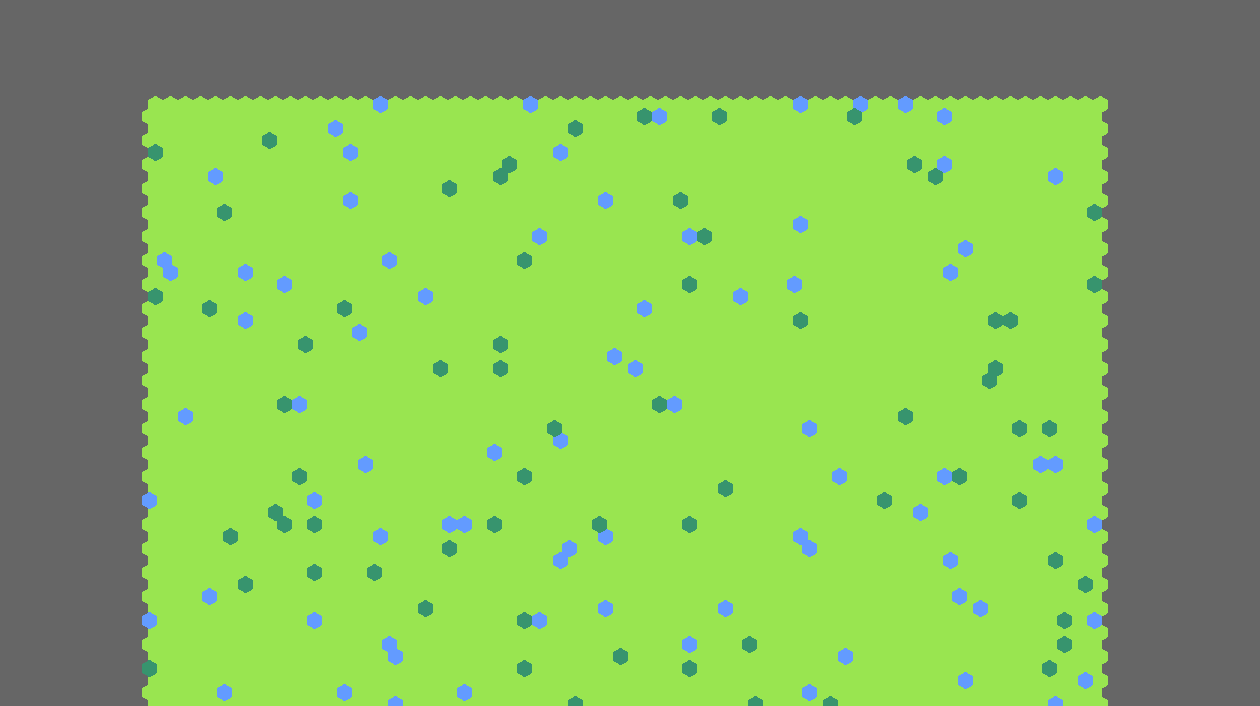bevy_ecs_tilemap
A tilemap rendering plugin for bevy. It is more ECS friendly as it makes tiles entities.
Features
- A tile per entity.
- Fast rendering using a chunked approach.
- Layers and sparse tile maps.
- GPU powered animations.
- Isometric and Hexagonal tile maps.
Upcoming Features
- Support for isometric and hexagon rendering.
- Built in animation support – see
animationexample. - Texture array support.
- Layers and add/remove tiles.
Screenshots
How Does This Work?
Quite simple there is a tile per entity. Behind the scenes the tiles are split into chunks that each have their own mesh which is sent to the GPU in an optimal way.
Why Use This Instead of X?
Because each tile is an entity of its own editing tiles is super easy and convenient. This allows you to tag entities for updating and makes stuff like animation easier. Want to have a mining simulation where damage is applied to tiles? That’s easy with this plugin:
struct Damage {
amount: u32,
}
fn update_damage(
mut query: Query<(&mut Tile, &Damage), Changed<Damage>>,
) {
for (mut tile, damage) in query.iter_mut() {
tile.texture_index = TILE_DAMAGE_OFFSET + damage.amount;
}
}Examples
accessing_tiles– An example showing how one can access tiles from the map object by using tile map coordinates.animation– Basic CPU animation example.bench- A stress test of the map rendering system. Takes a while to load.dynamic_map- A random map that is only partial filled with tiles that changes every so often.game_of_life- A game of life simulator.hex_column- A map that is meshed using “pointy” hexagons.hex_row- A map that is meshed using flat hexagons.iso_diamond- An isometric meshed map using diamond ordering.iso_staggered- An isometric meshed map using staggered ordering.layers- An example of how you can use multiple map entities/components for “layers”.ldtk- An example of loading and rendering of a LDTK map which requires theldtkfeature. Use:cargo run --example ldtk --features ldtkmap- The simplest example of how to create a tile map.random_map- A bench of editing all of the tiles every 100 ms.remove_tiles- An example showing how you can remove tiles by using map_querysparse_tiles- An example showing how to generate a map where not all of the tiles exist for a given square in the tile map.tiled- An example of loading and rendering of a tiled map editor map which requires thetiled_mapfeature. Use:cargo run --example tiled --features tiled_mapvisibility- An example showcasing visibility of tiles and chunks.
Running Examples
cargo run --release --example map
Cargo Features
ldtk- Enables ldtk loading.tiled_map- Enabled tiled map editor loading.
Known Issues
- None – please report any issues!
Asset credits
- Field of green by GuttyKreum.




